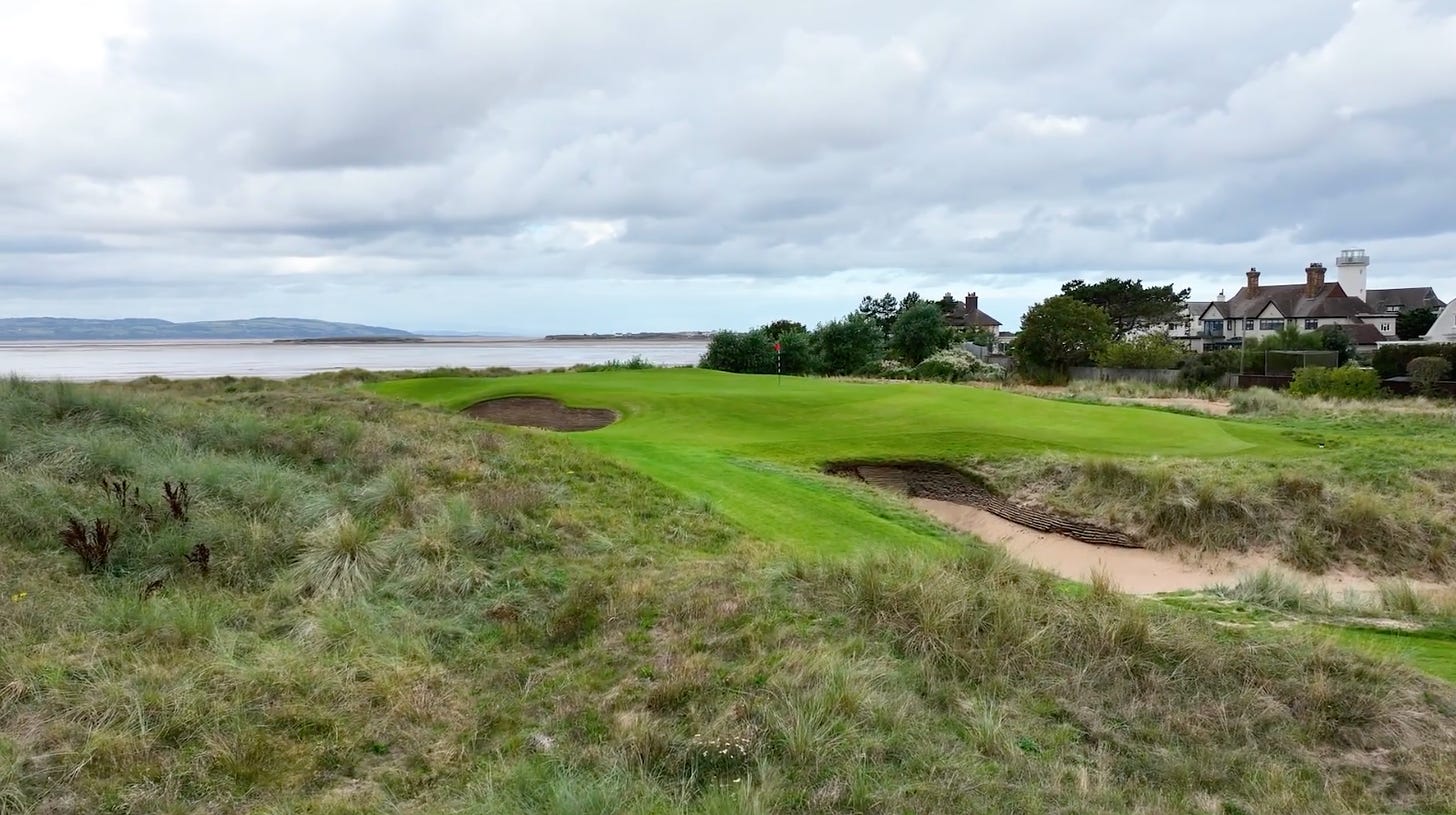All Eyes On Little Eye
The 151st Open arrives at Royal Liverpool with a bold new short par 3 17th. Might we be so lucky to have chatter about the rebooted finishing stretch cut into the tedious PGA Tour-LIV talk?
As if beamed down from the Golf Gods anticipating excessive scuttlebutt over framework agreements, anti-trust violations and rumors of His Excellency’s presence, Royal Liverpool will unveil a striking 17th hole dubbed “Little Eye” at this week’s 151st Open. The eventual winner will have to survive a massive little shot late in the championship to hoist the Claret Jug. But might this wee new hole be too aggressive of a change? Or just what this well-regarded venue needed to zhuzh up the conclusion?
Please, oh pretty please, let the bickering begin.
Imagine Paul one day deciding to punch up Abbey Road’s concluding trifecta of glorious almost-songs. Ringo and Yoko insist Golden Slumbers is fine but agree to let Paul liven things up with an AI-infused Carry That Weight remix designed for Dolby Atmos and modern sound systems, before a two-minute extended version of The End. You know, because of the athletes today.
This is the artistic conundrum presented at Hoylake where a history of continual design evolution has addressed changes in the property or the game. There is no modern era comparable of one links hole getting swapped out for an edgier shot with hopes of livening up the finish.
In a few days we’ll know if the combined efforts of the club, architect Martin Ebert and R&A will create a fantastic new conclusion or a mistep akin to messimg around with a timeless Beatles album.
The new 136-yarder faces toward the Dee Estuary instead of teeing off from it, as the old 15th in Open routings played. Disaster lurks on all sides of a skyline green created three years ago and which has received a wide range of reviews. The only comparable modern Open venue alteration, at least in terms of sheer change to something so established, was handled by the same architect at Turnberry. But it’s currently not on the Open schedule and that project involved radical alterations to the full course.
At Hoylake, architect Ebert was charged with devising a new 17th along with other more traditional tweaks in advance of this Open. In return, he presented a horizon-line green with tees set below the surface, deep bunkers left and right, a menacing false front, and another steep fall-off over the green to the estuary’s sandy cusp. A change in direction allowed the par 5 15th and 18th holes to be lengthened and means the new 17th mixes up the directions players will face the wind at Royal Liverpool’s terrific one-shotters. But if it’s windy, the Little Eye could also be a terror that makes Troon’s Postage Stamp seem quaint.
“The left hand bunker is far less penal given a good lie,” says Ebert, who also points out how the green slopes toward the tee as if to downplay what could be a wild scene in blustery winds and with no ground option to get on the green.
But in less wind? Ebert predicts plenty of birdies followed by more at the par-5 18th with its fairway expanded and better positioned to avoid the out-of-bounds very much in play.
“This creates a real opportunity for a player to finish with an under-par flourish over the closing holes,” he says. “But there is also a significant risk of going in the other direction, particularly with the potential for finding trouble at the new 17th and the extended 18th.”
The checkered history of adding a radical new hole expressly for a major likely has all involved a bit nervous going into the week. But in the cases of Oak Hill and Inverness, the design work aimed for sheer difficulty and other stuff like spectator movement.







